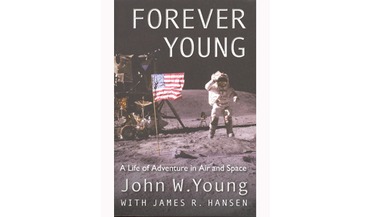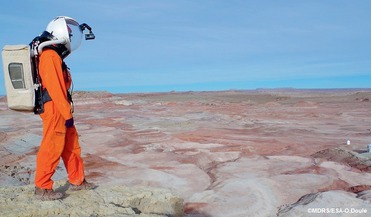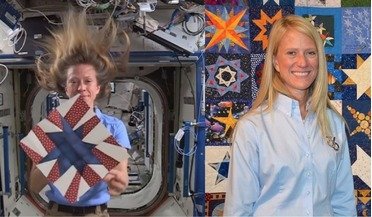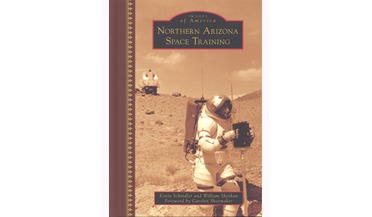 29 March 2018
Forever Young: a life of adventure in air and space
29 March 2018
Forever Young: a life of adventure in air and space
... it must have been uppermost in Young’s memories of the programme. After all, he had already been that far on Apollo 10, a presumably frustrating mission designed only to go as far as lunar orbit and not land; to be returning to the command module...
 December 2014
Ready for Mars? From Mars-500 to zero-gravity medical issues
December 2014
Ready for Mars? From Mars-500 to zero-gravity medical issues
... the crew and their family. While the intrepid Apollo astronauts ventured into cislunar space beyond orbital distances, ...1.00 sievert. The dangers are real and present. Shortly after the Apollo 16 flight to the Moon returned in 1972, for example, a...
 March 2017
Space for art: Quilting in orbit
March 2017
Space for art: Quilting in orbit
...by Patricia A Hobbs. ‘Top right: Leaving Home: Launch of the Apollo 8’ by Tanya A Brown. Bottom left: ‘The Rocket that Grandpa ...20, 1969; honour all of the Apollo missions; recognise all of the Apollo astronauts; investigate scientific Moon images; ...
 June 2019
Space industry prime directive
June 2019
Space industry prime directive
... 30-year programme in July 2011. We’ve achieved a lot in space in the 50 years since Apollo 11. Where do you think the next five decades will take us? Apollo served its geo-political imperative - which was to beat the Soviets - and...
 29 March 2018
Northern Arizona Space Training
29 March 2018
Northern Arizona Space Training
...Modern America’ series, this book is arguably about as ‘niche’ as they get, being dedicated to the geology training of Apollo astronauts in Northern Arizona in the 1960s. The unusual cover picture aptly summarises the contents: it shows a spacesuited...
 19 June 2019
Shoot for the Moon
19 June 2019
Shoot for the Moon
...) – gives some indication of its coverage, but it’s important to note that this is not a blow-by-blow account of the Apollo 11 mission. That consumes only the final 90 pages or so of Part IV, entitled “Down”. Three other parts – “Up”, “Around” and...